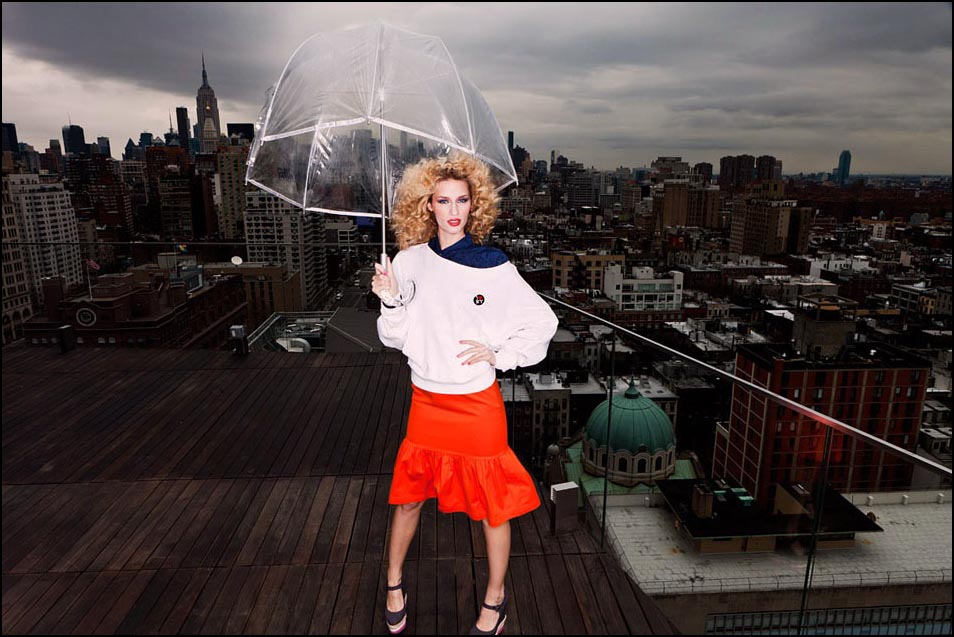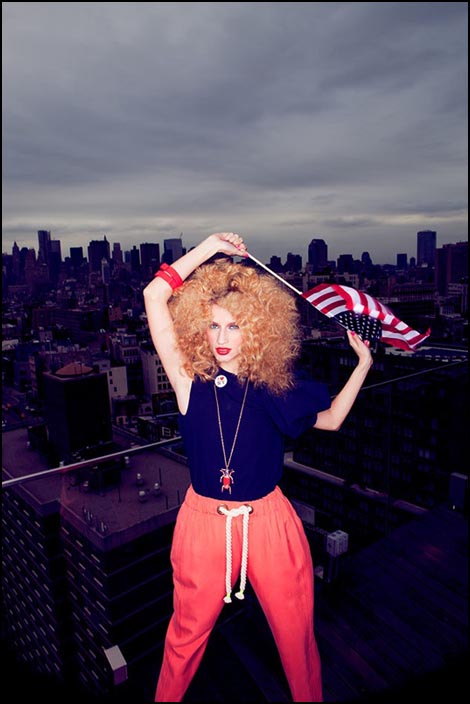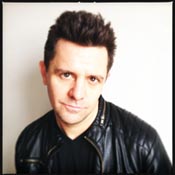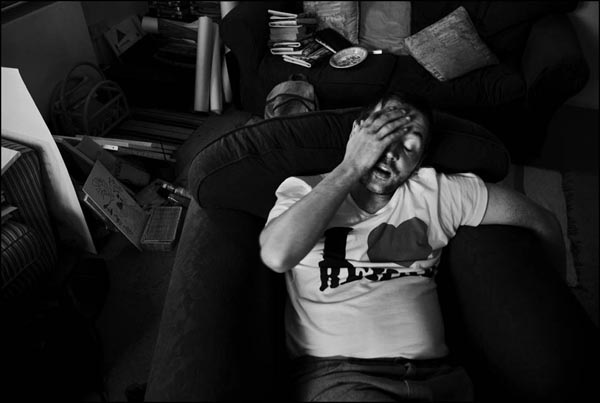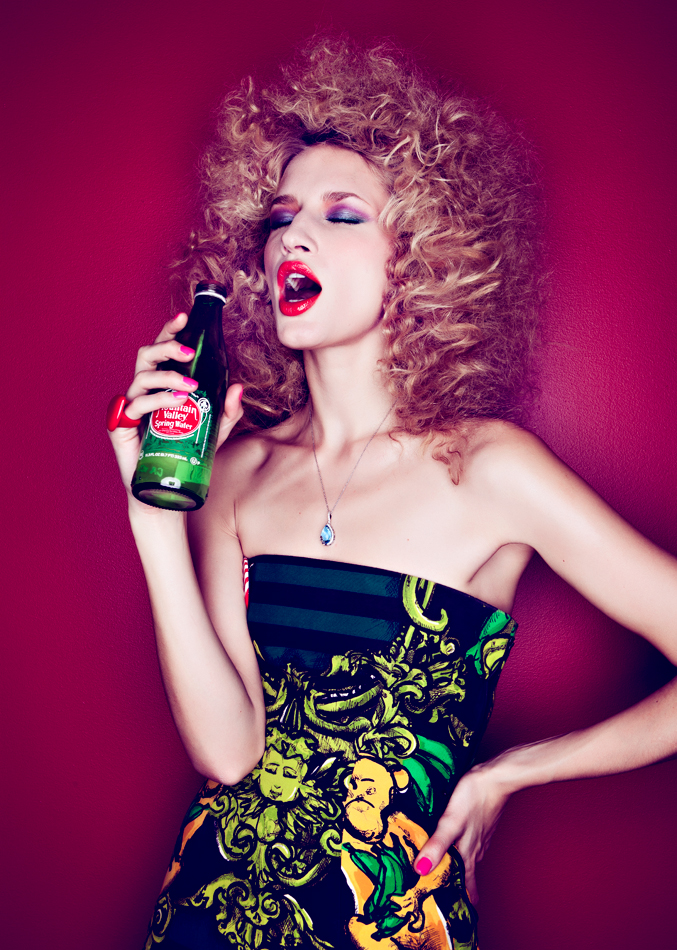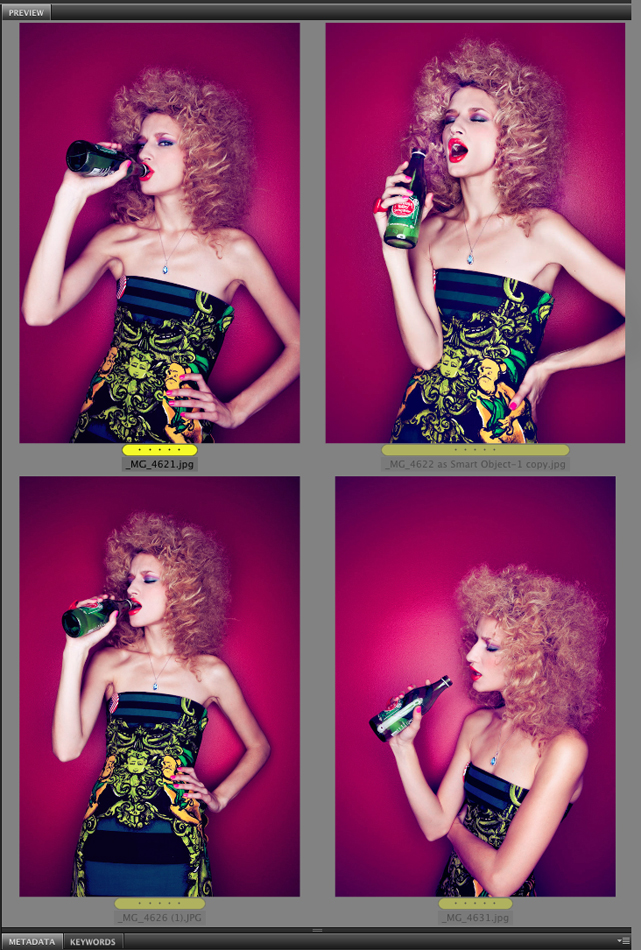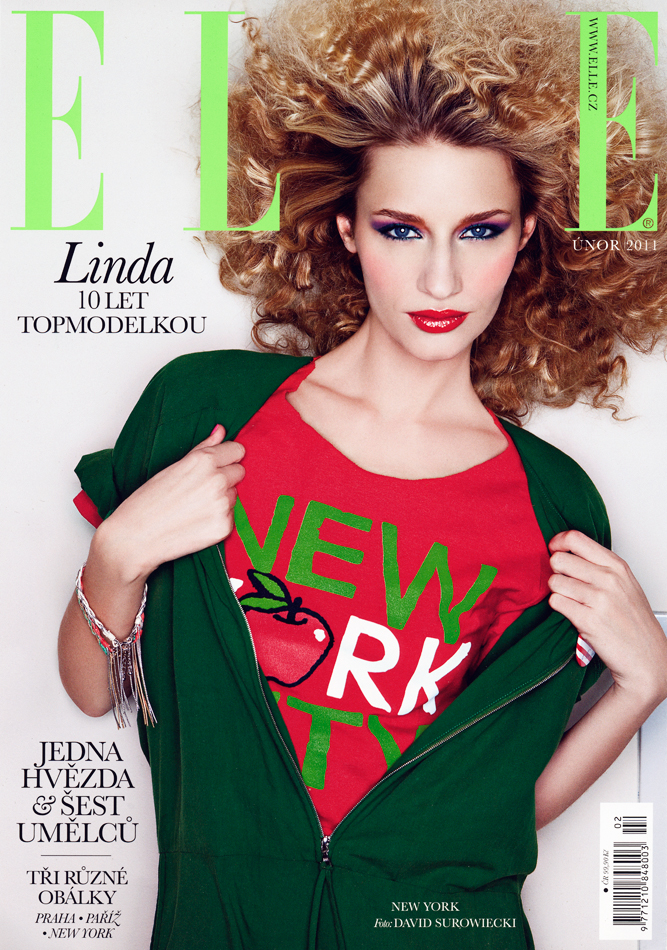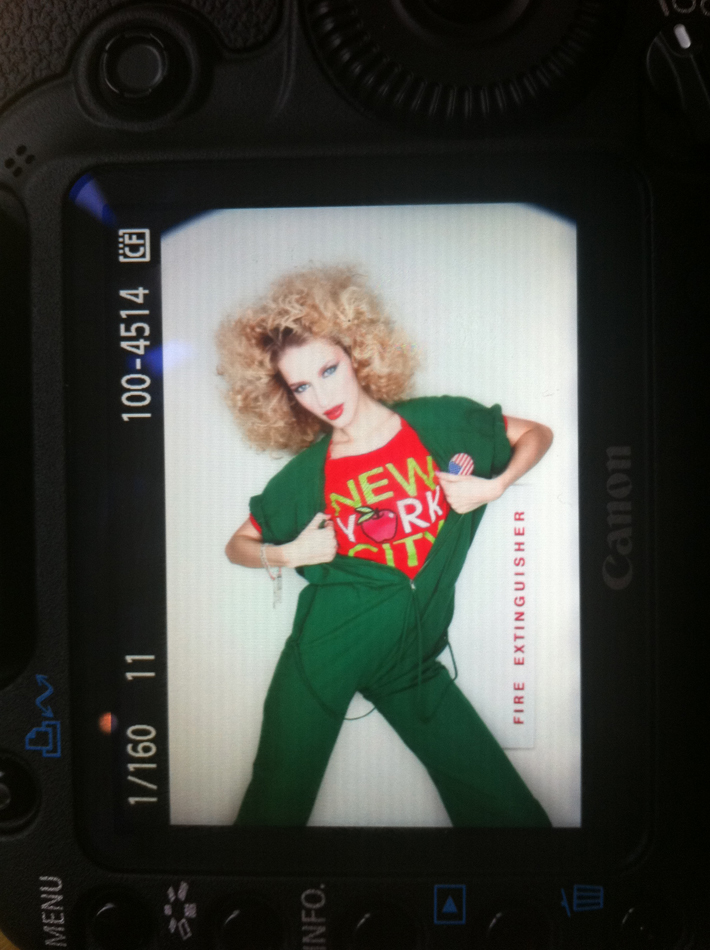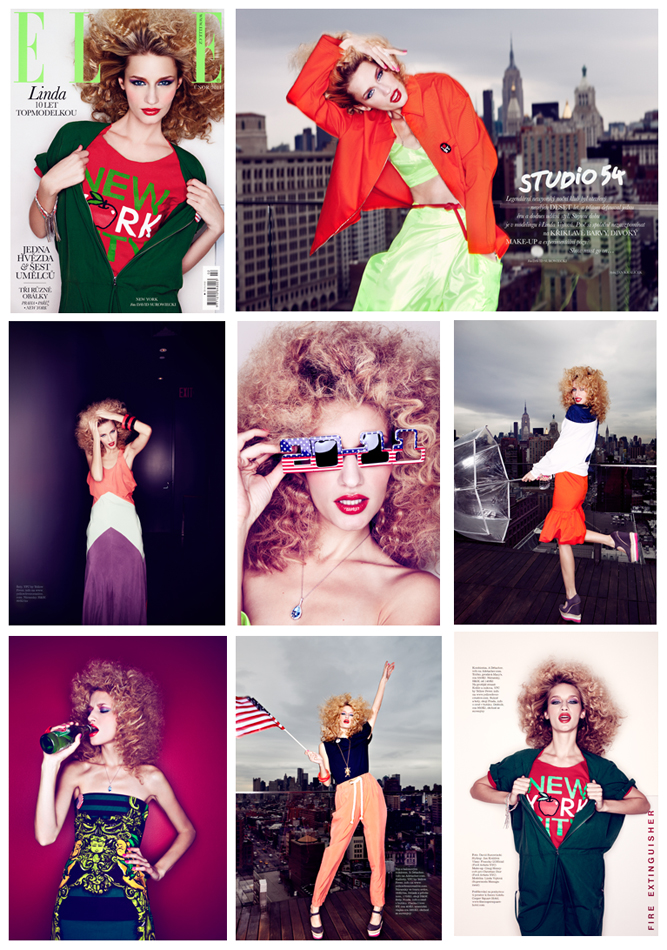TID:
Did you have a plan or storyboard to follow when shooting this fashion story?
DAVID:
For this story, we were shooting off-the-cuff with no storyboard. Our references for the shoot were mostly about the lighting, featuring a direct-flash style of lighting -- not necessarily small flash on top of the camera, but something with that feeling. We also wanted the story to feel somehow “American” since we were shooting in New York and the magazine is based in Prague. It was December and cold, so our outside options were limited. That is where little styling touches came into play, and then we were also able to shoot on the rooftop deck of the hotel to incorporate the New York skyline to bring the point home.
TID:
How much time did you have with this shoot?
DAVID:
We started the day at 9 am and were done by 4 pm, which is a short day by fashion standards. On any production like this, your shooting time is considerably less than you would think because of the fitting, hair, makeup, and changing outfits or looks between shots.
I didn’t begin shooting the first look until 1:30 pm, and I had finished the seventh look by 4 pm, which is really crazy fast. Most of most shoots won’t move that quickly, but a few things this day really contributed to that.
First, the model has a big role to play, obviously. Linda Vojtova is a great model, very experienced, and most importantly, she's very easy to shoot. When you look through the camera and realize that it’s hard to take a bad picture of your subject, then you know you’re in good shape.
Second, I had a fixed lighting setup, so we could move on to the next photo as quickly as the team could change the model for the next look. Exposure moved around a little based on my distance from the model, and when I was outside, finding the right balance between the daylight and the flash was the challenge, but other than that, the lighting was set and consistent. We shot the whole story in two locations the Cooper Hotel, so there was no time wasted relocating.
TID:
Do you think your documentary background helps you with process?
DAVID:
I don’t think that it really plays a role much in my planning, but it definitely has been a big help when I’m shooting natural light and when I’m on location. When I was just starting out shooting fashion and editorial portraits, I had the confidence to know that I could put the subject in just about any environment, any type of lighting, and come away with something good. It’s something that newspaper and documentary photographers deal with every day. They have an assignment, or are thrown into a situation where they don’t have any control, and they have to produce something that will run in the newspaper the next morning. There’s this calm, this belief that the picture will come.
How many times has a newspaper photographer had to go find a “feature” photo, with no idea of where the picture is going to come from, but inevitably it happens? I still really enjoy shooting fashion and portraits like that, and I feel very much at home when we are out in the streets, in the city somewhere and just letting the shoot happen.
